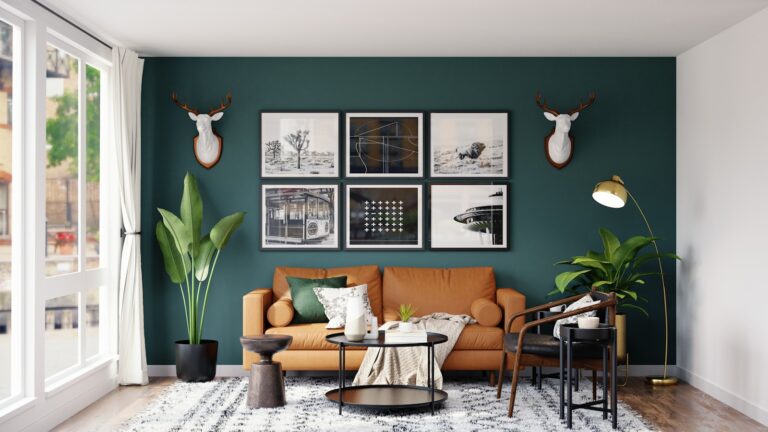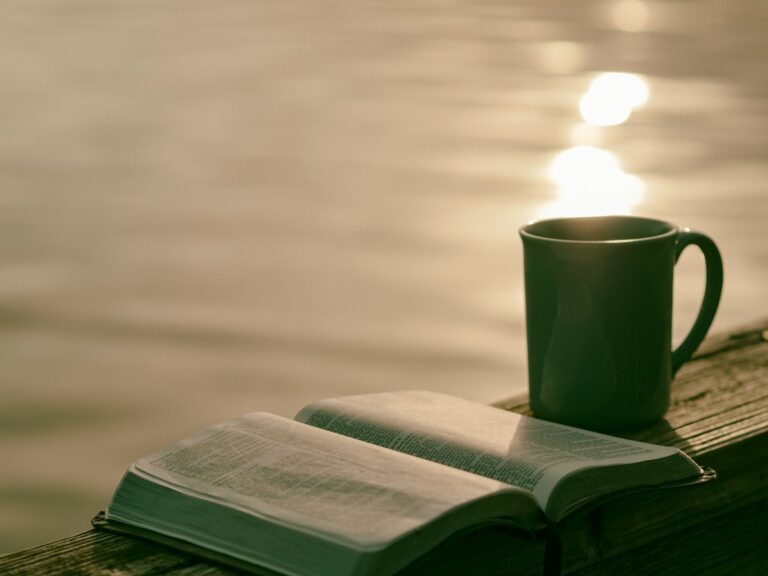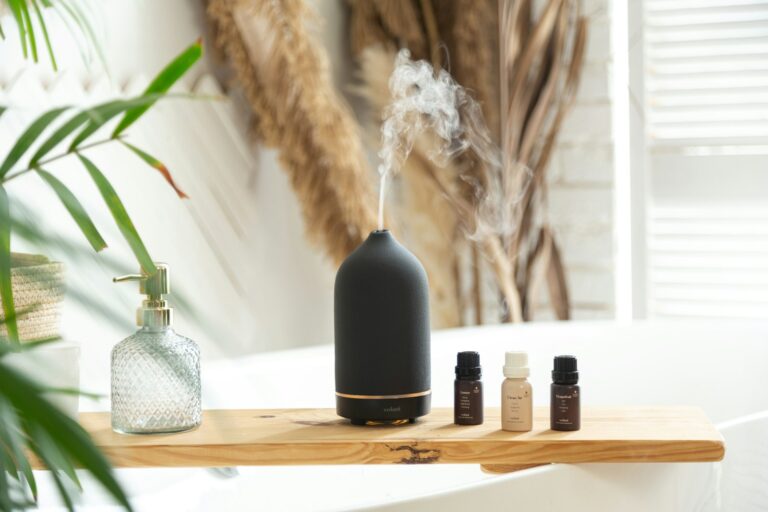A gratitude board is a simple tool, but it can really change the vibe of your home. When you see a daily reminder of what you’re thankful for, it becomes easier to focus on the good stuff instead of getting stuck on stress. Making a gratitude board is a hands-on way to practice mindfulness and appreciation, and honestly, studies say it can boost your mood and overall happiness.
Getting started is pretty low-effort. Grab a bulletin board, corkboard, or just pick a spot on your wall where you can stick notes, photos, or little mementos that mean something to you. Some folks love colorful sticky notes and pens. Others go for family pictures or appreciation letters pinned up for everyone to see.
How fancy or simple you make your board is totally up to you. Put it somewhere you’ll see often—maybe the kitchen or living room. Try to add new things regularly, even if they’re small, like a delicious breakfast or a sweet text from a friend. Over time, this habit makes gratitude something you actually live, not just think about from time to time.
Key Takeaways
- A gratitude board is a visual way to keep track of what you’re thankful for and helps bring more positive thinking into your home.
- You can make your board with easy stuff like a corkboard, photos, and notes—whatever fits the things you appreciate.
- Regularly adding to your board helps turn gratitude into a daily habit that can shift your outlook for the better.
What Is a Gratitude Board?
A gratitude board is just a spot where you collect and show off things you’re grateful for. It’s a daily nudge to notice what’s good in your life, which can really help you focus on appreciation instead of worry.
Purpose and Benefits
A gratitude board gets you in the habit of paying attention to the good moments. Having a place for gratitude helps train your mind to spot the positives more often.
There’s actual research backing this up—focusing on what you’re thankful for can:
- Lower stress and anxiety
- Help you sleep better
- Boost your mood
- Strengthen relationships
- Lead to more happiness overall
A gratitude board makes all this real. You’re not just thinking about gratitude—you’re seeing it every day.
Lots of people say their gratitude board helps them stay upbeat, even when things aren’t going great. It’s kind of like having a stash of happy memories you can flip through when you need a lift.
Types of Gratitude Boards
There’s no one way to make a gratitude board. Here are a few options:
Cork Boards: Pin notes, photos, cards, and anything else that reminds you what you’re thankful for. Cork boards are easy to change up.
Digital Boards: Use apps like Pinterest or other gratitude apps for a virtual version. These are handy if you want to take your board with you.
Magnetic Boards: Stick one on your fridge and use magnets for notes and pics.
Framed Boards: More permanent, usually made with a big picture frame filled with special items.
Family Boards: Everyone in the house can add what they’re thankful for. It’s a nice way to connect and share.
You can keep your board themed or just let it be a messy collection of whatever makes you smile.
Gratitude Board vs. Gratitude Wall
A gratitude board is usually smaller and easy to move around. If you want to go big, a gratitude wall takes up more space and is more of a permanent thing—maybe covering a whole section of a wall.
Walls are great for:
- Big families or groups
- Community spaces
- Classrooms or offices
- Long-term projects
Boards are good if you:
- Don’t have much space
- Want something for yourself
- Like to rearrange things often
- Are just getting started
Both are awesome for building appreciation, but boards are usually easier to start with. If you end up loving it, you can always go bigger later.
How to Start a Gratitude Board for Your Home
Making a gratitude board is a simple way to spot the good things in life and bring some positive energy into your home. It’s easy to set up and can become a sweet part of your daily routine.
Choosing the Right Location
Pick a spot where everyone will see the board often. Good options:
- Kitchen wall or fridge
- Family or living room
- Hallway or entry
- Home office
The best spot is somewhere you all walk by a lot. This way, gratitude becomes part of your day without much effort. Make sure there’s enough light so everyone can actually read what’s on the board.
Try to leave enough space for your board to grow. You might start small, but it’s surprising how quickly the notes add up.
Selecting Materials and Supplies
Here’s what you’ll need:
- Base: Corkboard, bulletin board, magnetic board, or even a piece of sound insulation board
- Writing tools: Pens, markers, or pencils—colorful ones if you like
- Attachment: Pushpins, magnets, tape, or clips
- Paper: Sticky notes, index cards, or scraps of colored paper
If you’re more into digital stuff, Pinterest boards are great for saving ideas. Canva has printable templates if you want to make something fancy.
Decorate with washi tape, stickers, and photos to make your board feel like yours.
Setting Up and Decorating
Start with a clean board and add a title like “Our Gratitude Board” or “Things We’re Thankful For.” It helps set the mood.
You could organize your board with sections like:
- Daily gratitude
- Family memories
- Kind words
- Goals you’ve hit
Kick things off with a few notes—maybe “I’m grateful for our home” or “Thank you for family dinners.”
Photos are always a good idea. Add pics of family, pets, or moments that make you happy. Some families like to keep a gratitude jar nearby for longer notes or private thoughts.
Making It a Family Activity
Pick a regular time to add to the board—maybe at breakfast or before dinner. It can become a nice family ritual.
For kids, keep it light and fun:
- Ask questions like “What made you smile today?”
- Let little ones draw instead of write
- Take turns reading notes out loud
Try mini-challenges to keep things interesting, like “Gratitude Sunday” where everyone adds three things, or a monthly theme.
No pressure—if someone’s not into it at first, that’s okay. Usually, people join in once they see others enjoying it.
A photo clips gratitude board is a fun way to swap out photos or notes without worrying about damaging the wall.
Creative Ideas to Use and Maintain a Gratitude Board
A gratitude board really shines when you use it often and find ways to make it part of your life. The right approach can turn it into a real mood-booster.
Writing and Displaying Gratitude Notes
Pick out some colorful sticky notes or cards for your messages. Maybe spend a few minutes each morning or night jotting down what you’re thankful for. Try to be specific—like instead of “I’m grateful for my family,” write “I loved how Mom made my favorite meal when I was sad.”
Photo clips are nice for hanging up notes. You can organize by topics like “People,” “Experiences,” or “Small Joys” if you want to keep things tidy.
Keep pens and blank notes close by so it’s easy to add something whenever the mood strikes.
Take photos of special moments and add them to the board, too.
Incorporating Thank You Notes and Messages
Thank you notes add a deeper layer to your board. Write little messages to people who’ve helped you, then pin them up or send them after a while.
Set aside a spot for family members to leave thank you notes for each other. It’s a simple way to build more appreciation at home.
Quotes about gratitude can be a nice touch, especially if you’re not sure what to write.
If someone writes you a thank you note, add that too. It’s a reminder that what you do matters.
Switch up this section every month or so to keep things feeling fresh.
Ways to Show Gratitude Daily
Make your gratitude board part of your daily routine. Maybe stand in front of it for a couple minutes each morning and read over the notes.
Try weekly themes like “Work Gratitude” or “Nature Appreciation” to keep things interesting. DIY gratitude boards work best when you actually use them.
Some easy habits:
- Add one new note each day
- Save old notes in a gratitude jar or notebook
- Snap a photo of your board every month to see how it changes
- Let guests add a note when they visit
You might start to notice patterns in what makes you happy—maybe it’s quiet mornings, certain friends, or just little things.
Frequently Asked Questions
People usually have questions when starting a gratitude board—about supplies, quotes, getting the family involved, creative ideas, and how to make it part of daily life.
What materials are needed to create a gratitude board for your home?
You’ll want a base like a corkboard, poster board, or even a spot on the wall. Pushpins, thumbtacks, or sticky putty are good for attaching stuff.
Markers, pens, and sticky notes make it easy for everyone to write down what they’re thankful for. Add in some washi tape, colored paper, and clips to make it look nice.
Personal touches like photos, magazine cutouts, and little trinkets make your board unique. A photo clips gratitude board is a simple way to hang up pictures of things and people you love.
What are some inspiring quotes to include on a gratitude board?
“Gratitude turns what we have into enough” by Melody Beattie is a classic. Or try “Enjoy the little things, for one day you may look back and realize they were the big things” by Robert Brault.
Short prompts like “Today I am thankful for…” or “Count your blessings” are helpful too. Family sayings or personal mantras are great if they mean something special to you.
Quotes from favorite books, songs, or movies work well. Change them up now and then to keep the board fresh.
Can you provide steps to make a gratitude board that involves the whole family?
Start with a quick family meeting to explain what the board’s about and get everyone on board. Let everyone pick out materials they like.
Set up the board in a spot everyone can reach. Maybe start a gratitude ritual where you all add notes after dinner.
When you have guests, ask them to write down something they’re grateful for and add it to the board as a keepsake.
What are creative ways to display appreciation on a gratitude wall?
Try themed sections like “Family,” “Friends,” “Experiences,” or “Little Joys.” Use different colors for each person so you can see who added what.
A gratitude tree is fun—draw the trunk and branches, then use leaves for your notes. Or make a photo collage with captions about why each moment matters.
A messy-themed board with handwritten notes can feel extra real and heartfelt.
How can you integrate a gratitude board into your daily home routine?
Put your board somewhere you’ll see it all the time—like the kitchen, family room, or entryway.
Pick a regular time to add new notes, maybe at breakfast or before bed. Try a morning gratitude circle where everyone shares one thing they’re thankful for to kick off the day.
Read the board whenever you walk by to keep those good feelings going. Take photos of your board now and then to remember how it changes over time.
What are tips for maintaining and updating a gratitude board over time?
Switch things up every season so your board doesn’t just fade into the background. Try picking themes that fit the time of year—maybe “summer joys” or “winter comforts.” It keeps things fresh, and honestly, it’s more fun that way.
Clear out old notes now and then to make space for new ones. Before you do, snap a quick photo if you want to remember what was there. It’s a nice way to look back without cluttering up your board.
If people start losing interest, ask more specific questions. Something like, “What made you smile today?” usually gets better responses. And if you’re trying to build positive workplace culture, let visitors know why you keep the board going. Sometimes just explaining it sparks new enthusiasm—even with family.




